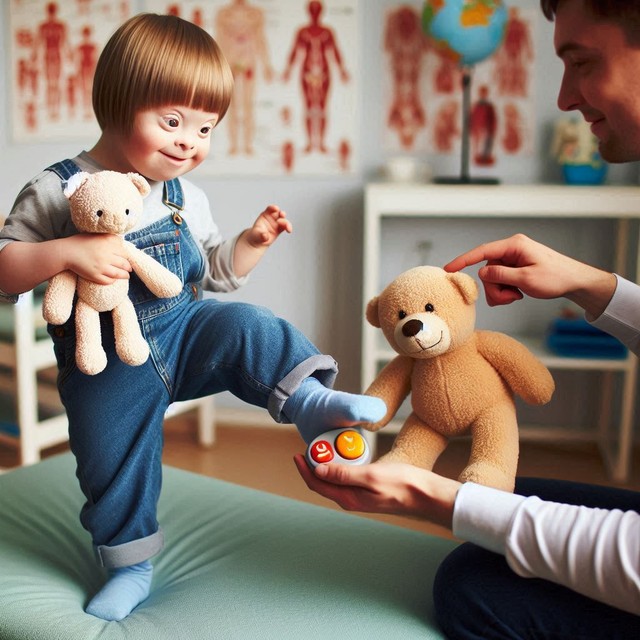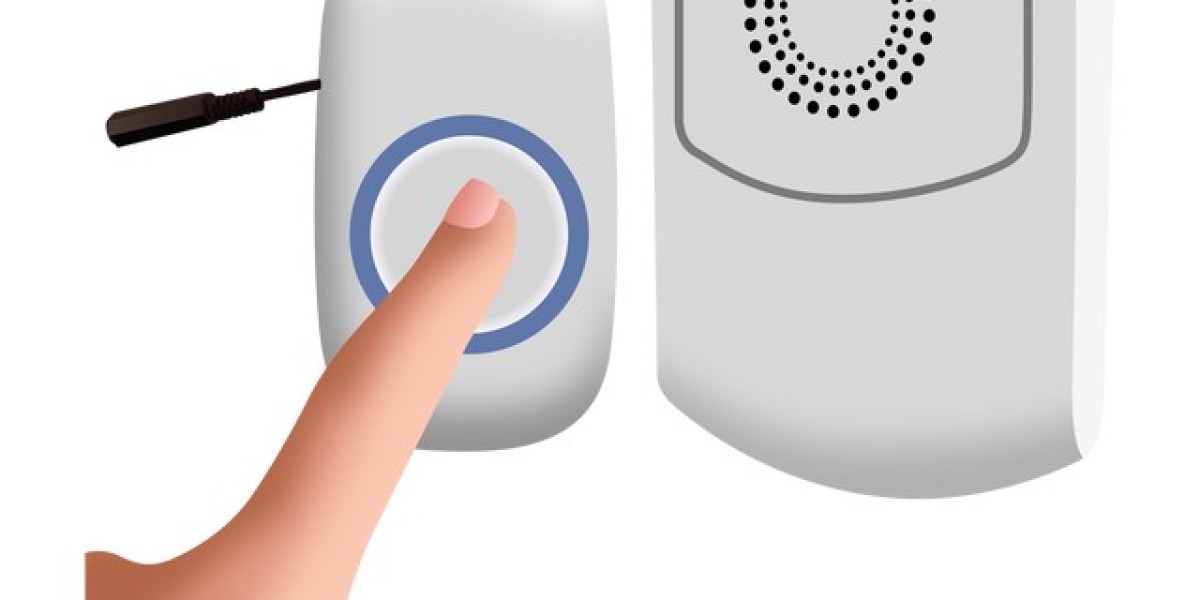

@adaptivetechs
Adaptive Equipment For Children
Adaptive Tech Solutions offers a complete line of assistive technology devices, speech therapy products for people with disabilities, handicaps and special needs. Shop now!
visit here: https://www.adaptivetechsolutions.com/
Building Language Skills Through Play: Best Toys for Speech Therapy
Language development is a crucial part of a child's growth, and for children with speech delays or special needs, engaging in play can be one of the most effective ways to enhance communication skills. Speech therapy products, including switch-activated toys, provide interactive and fun ways for children to develop language abilities. In this blog, we explore the best toys for speech therapy and how they can support children in their communication journey.
Why Play is Essential for Speech Development
Play is a natural and enjoyable way for children to learn new skills, including speech and language. Through play, children can practice turn-taking, listening, and expressing themselves. Speech therapy products, such as adaptive toys, encourage children to engage in meaningful interactions that build vocabulary, improve articulation, and enhance communication confidence.
Best Toys for Speech Therapy
1. Switch-Activated Toys
Switch-activated toys are excellent tools for children with limited mobility or communication challenges. These toys allow children to control movement, sounds, and lights with an accessible switch, encouraging cause-and-effect learning and giving them a sense of control over their environment. Some of the best switch toys for special needs include:
• Switch-Adapted Plush Animals – These toys respond with sounds and movements when activated, helping children associate actions with words.
• Bubble Machines – Encourages children to use their voice or switch to activate the toy, promoting speech attempts and interaction.
• Musical Switch Toys – Engaging music and lights help children develop auditory and visual processing skills while encouraging vocalization.
Find a wide selection of switch-activated toys at Adaptive Tech Solutions.
2. Cause-and-Effect Toys
Toys that react to a child’s actions help reinforce communication efforts. These include:
• Jack-in-the-Box Toys – Encourage anticipation and vocalization.
• Talking Button Toys – Help children develop speech by pressing a button to hear words or sounds.
• Sensory Light-Up Balls – Encourage children to express excitement and reactions through verbal responses.
3. Pretend Play Sets
Imaginative play helps children build conversational skills and social interactions. Consider:
• Play Kitchens – Encourages role-playing, labeling items, and following directions.
• Doctor Kits – Helps children learn new vocabulary and practice question-and-answer exchanges.
How Switch Toys Support Special Needs Children
Switch toys for special needs children are designed to be accessible and engaging, helping those with motor challenges participate in play activities. These toys can be adapted to work with a variety of switches, allowing children to control actions with minimal effort. The use of switch-activated toys promotes:
• Cause-and-effect learning
• Increased independence
• Social engagement
• Improved cognitive skills
At Adaptive Tech Solutions, you can explore a variety of speech therapy products and switch toys for special needs to find the perfect tools for your child’s speech and language development.
Final Thoughts
Building language skills through play is a fun and effective way to support speech development in children. Whether using speech therapy products, switch-activated toys, or switch toys for special needs, incorporating interactive toys into daily routines can make a significant impact on a child's communication abilities. Explore high-quality, adaptable toys at Adaptive Tech Solutions to help your child thrive in their speech journey!
For more information about Adaptive Equipment For Adults Visit here
https://www.adaptivetechsolutions.com/
The Role of Speech Therapy Products in Autism Communication | #switch Accessible Toys #alternative Communication Devices
Encouraging Unilateral Weight-Bearing Exercises with a Switch-Adapted Toy: Ideas for Physical Therapy and Home Treatment Carryover
When working with young children who have limited understanding of cause and effect, finding ways to engage them in physical therapy can be a challenge. A particularly effective strategy involves using positive reinforcement, such as activating a switch-adapted toy, to motivate the child to perform specific therapeutic activities. Unilateral weight-bearing exercises, which are essential for building strength, coordination, and motor skills, can be made more fun and rewarding through this approach. Let’s dive into how this can work and why it’s so effective.
The Power of a Switch-Adapted Toy
For children with limited understanding of cause and effect, immediate rewards are a key motivator. A switch-adapted toy – a toy that activates with a simple press of a switch – can be a fantastic tool in encouraging children to perform certain actions, like unilateral weight-bearing exercises, correctly. These toys can be activated by a switch, allowing the child to see an instant outcome of their effort.
When the child performs the exercise (e.g., placing weight on one hand or leg), the therapist or caregiver can activate the toy by pressing the switch. This immediate cause-effect connection is critical for the child’s learning process. Over time, the child begins to associate the action (performing the exercise) with the reward (the toy’s activation), encouraging them to repeat the behavior.
While this article focuses on unilateral weight-bearing exercises, it’s important to note that this technique can be applied to a wide range of therapeutic activities. Whether the goal is to encourage crawling, stretching, or any other physical exercise, using a switch-adapted toy to reinforce the desired behavior is a versatile tool that can enhance many exercises and make them more engaging for children.
Choosing the Right Toy
When selecting a switch-adapted toy, it’s crucial to choose one that will truly engage the child. The toy should be something the child enjoys interacting with, as this will increase their motivation to participate in the activity. If the child is excited about the toy, they will be more likely to perform the exercise correctly in order to activate it. Whether it’s a toy that makes fun sounds, lights up, or moves, the key is to make sure it aligns with the child’s interests. This ensures that the reward is both motivating and enjoyable, making the therapy session feel more like play and less like work.
Why Timing is Everything
Timing is key when using this technique. The switch-adapted toy should only be made available to the child during the therapy session, and it should be activated only when the child performs the task correctly. If the toy is readily available outside of the therapeutic setting, the child may lose interest in working for it. They could quickly realize that they can access the toy without putting in any effort, which means the incentive to participate in the exercise becomes less motivating.
To ensure that the toy retains its value as a reward, caregivers and therapists should:
• Limit Access to the Toy: Keep the toy out of sight when not in use during therapy sessions. This keeps the toy special and exciting when it’s tied to a task, and the child will learn to work for it.
• Consistent Reward Activation: Make sure to activate the toy consistently only when the child performs the unilateral weight-bearing exercise correctly. Consistency will help reinforce the behavior and the connection between the action and the reward.
• Gradual Fade: As the child gets more accustomed to the exercise and begins to perform it independently, the toy’s reward can be faded. This might look like requiring the child to perform the exercise for longer or with more precision before the toy is activated. The ultimate goal is to build independence in the child’s ability to perform the exercise without needing the toy as a constant motivator.
Final Thoughts
Incorporating a switch-adapted toy into unilateral weight-bearing exercises can be a game-changer for young children with limited cause-and-effect understanding. By making the toy an exclusive reward for performing the activity correctly, and ensuring the family is on board, the child will not only develop important motor skills but also learn valuable cognitive lessons. While this article focuses on unilateral weight-bearing, remember that this technique is adaptable to many other exercises, helping to engage the child in a wide variety of therapeutic tasks.
Choosing the right switch-adapted toy—one that truly engages the child and matches their interests—is crucial to the success of this approach. With the support of a dedicated family, this technique can significantly enhance the child’s therapeutic experience, making both the therapy and the progress much more enjoyable and rewarding. And, as a child's physical abilities strengthen and their understanding of cause-effect blooms, they can be the one who controls switch activated toys.
For more information about Disabled Call Button visit here https://www.adaptivetechsoluti....ons.com/adaptive-tec

